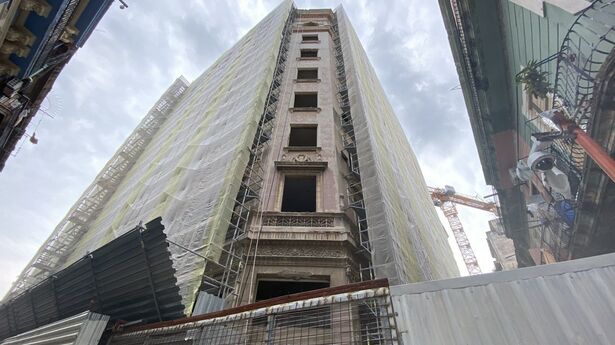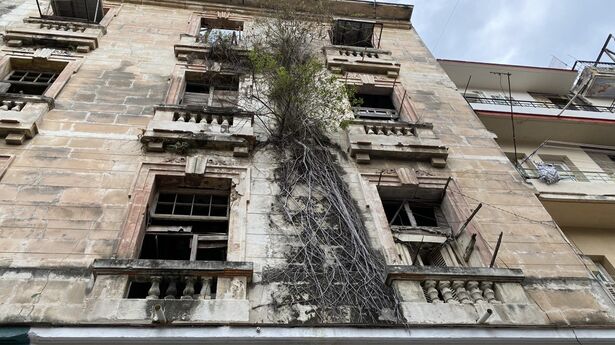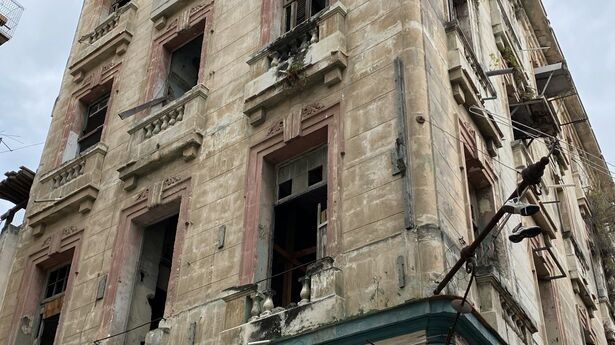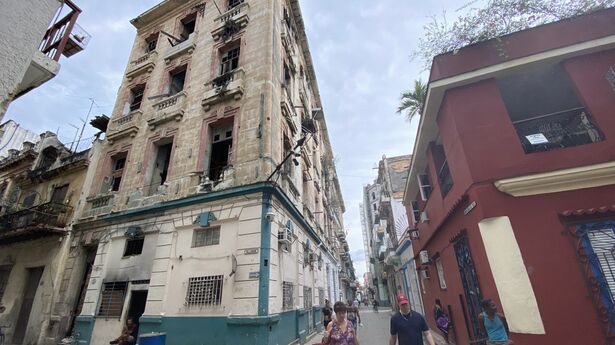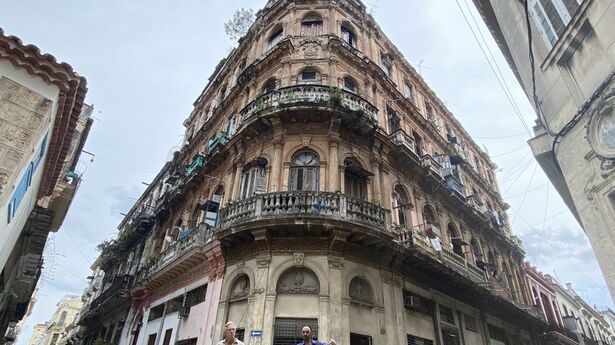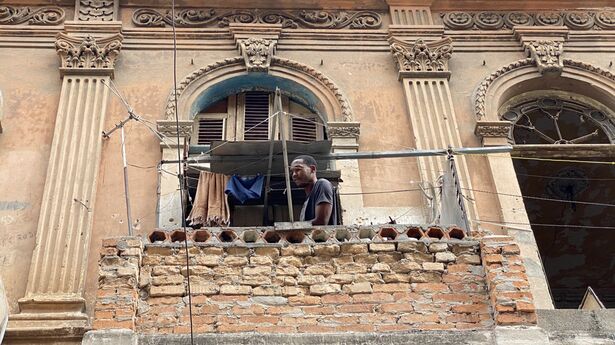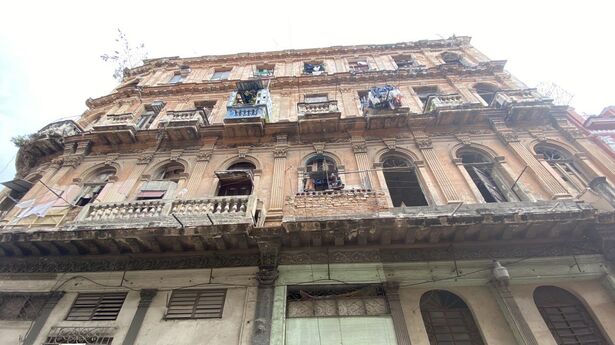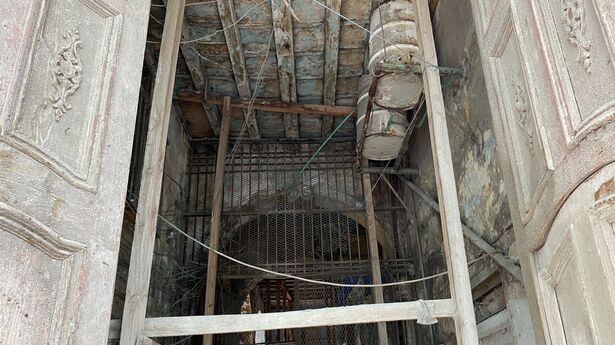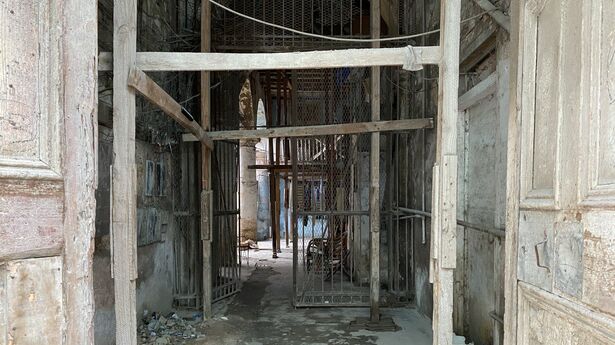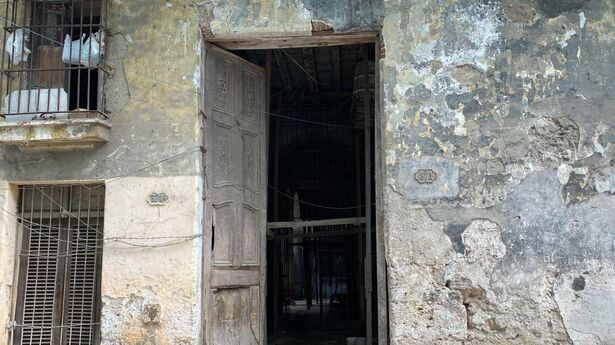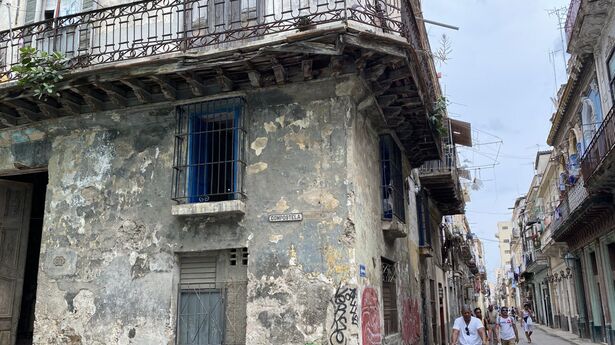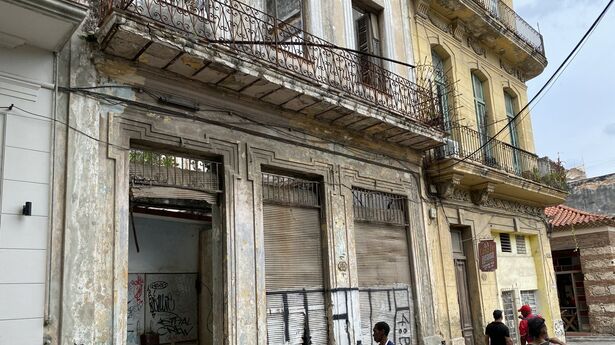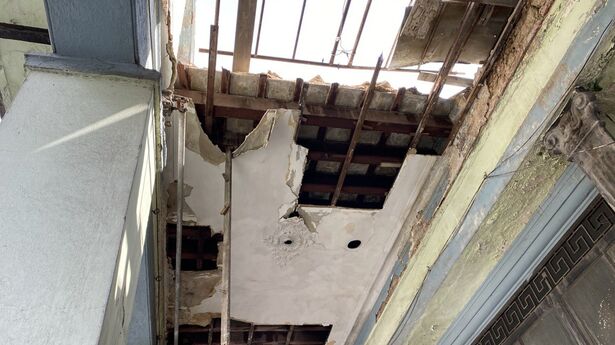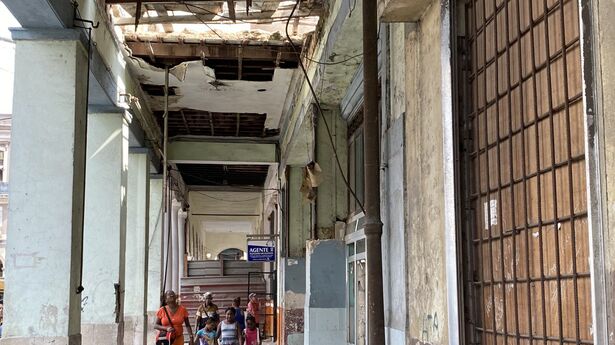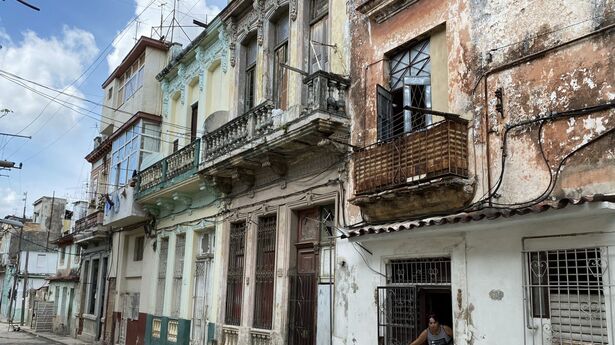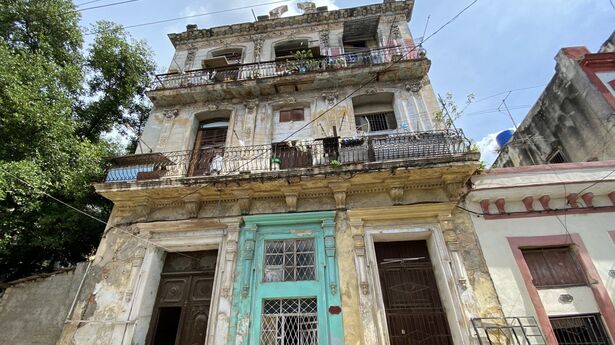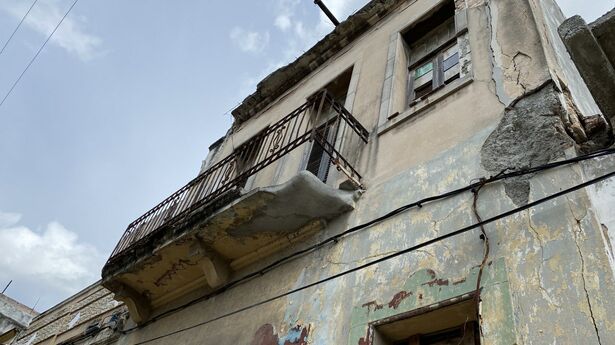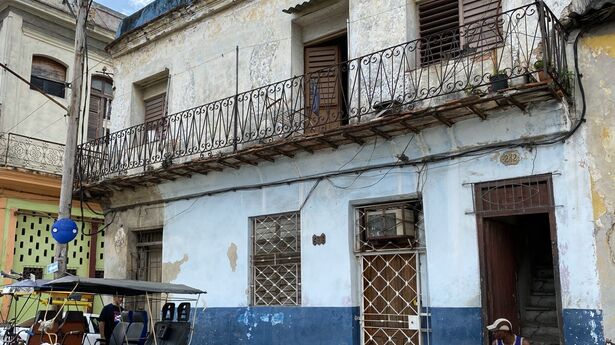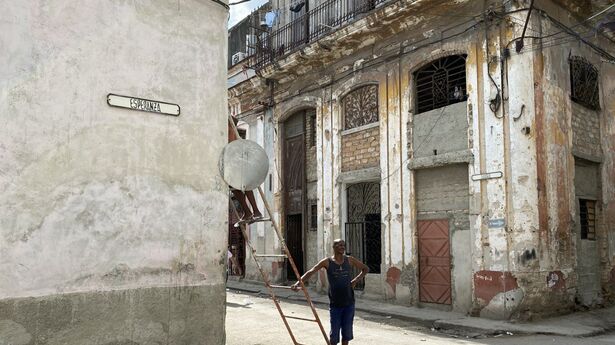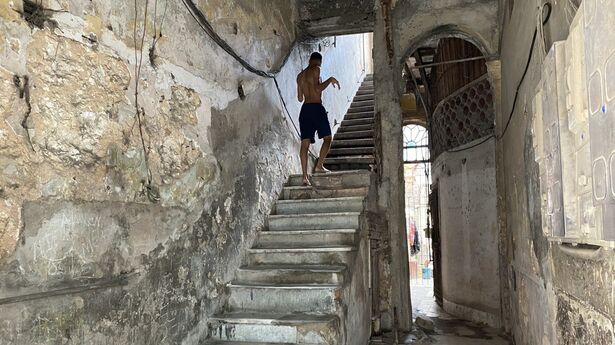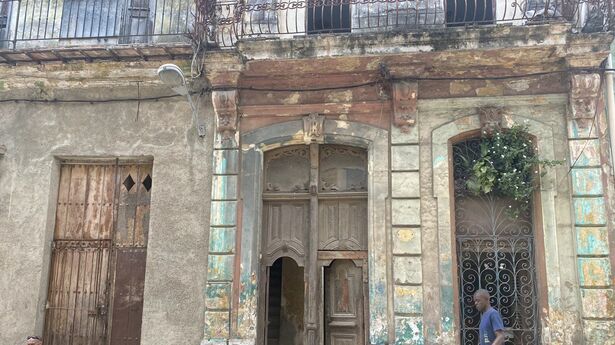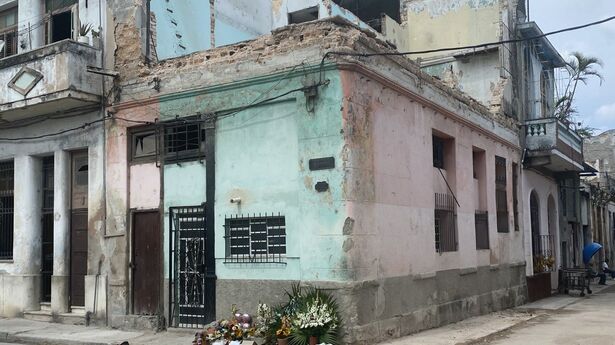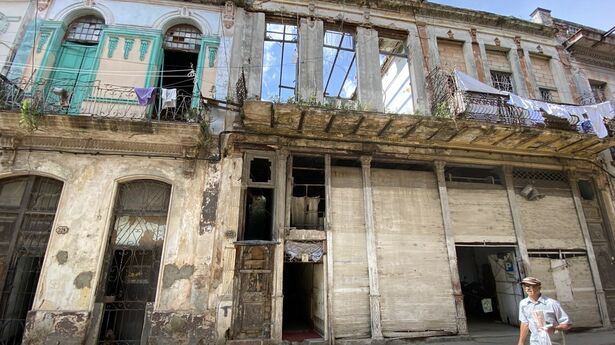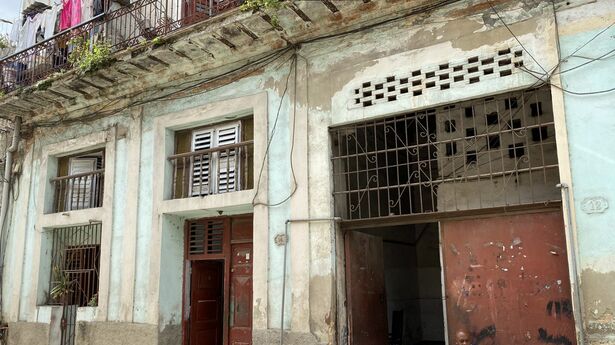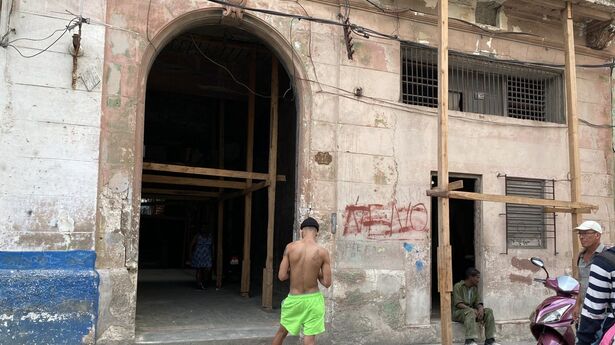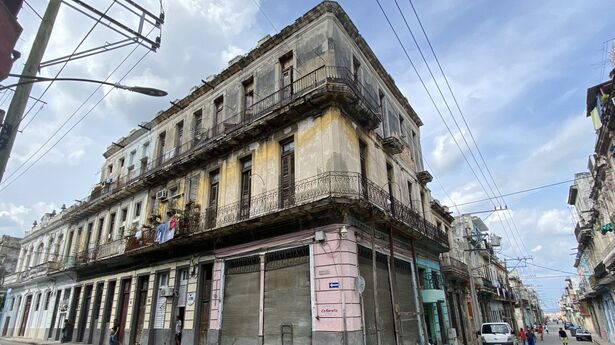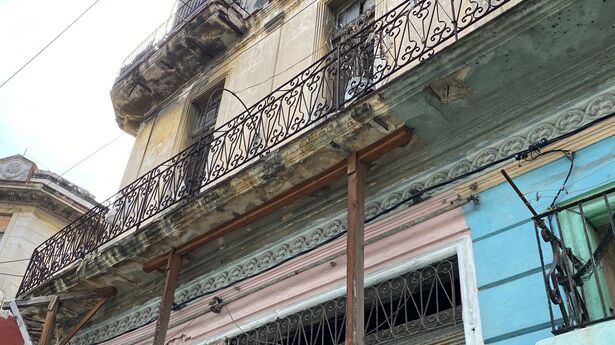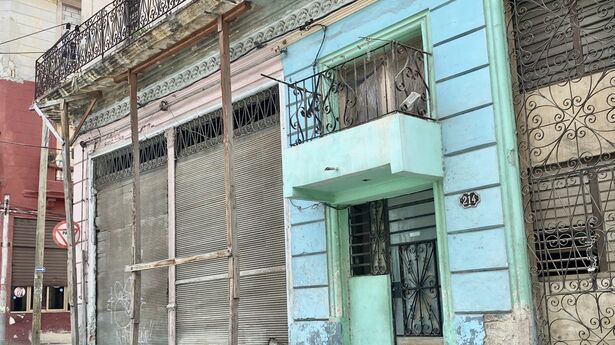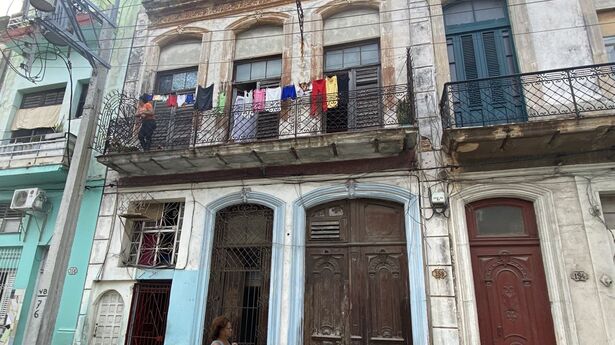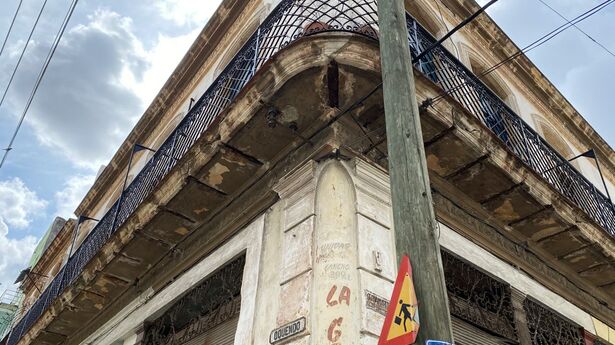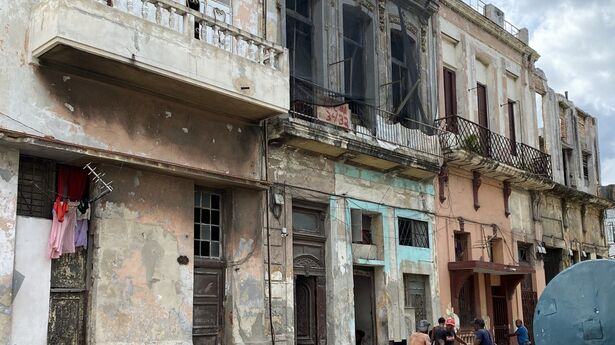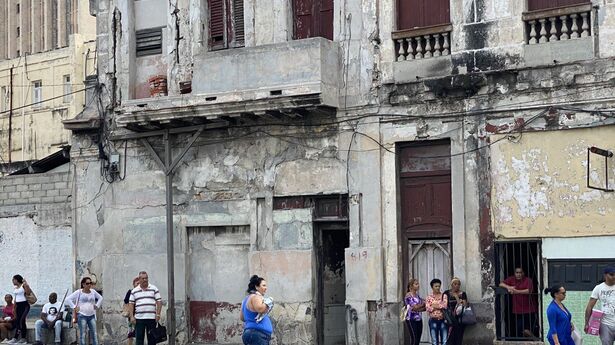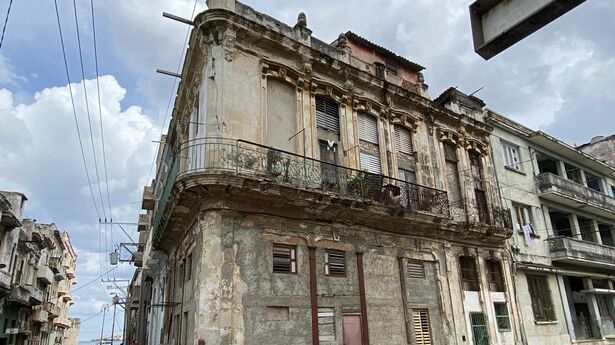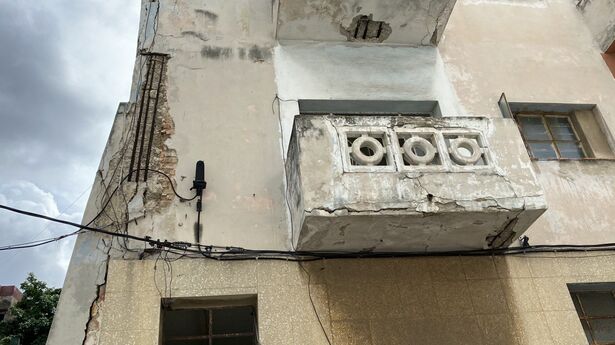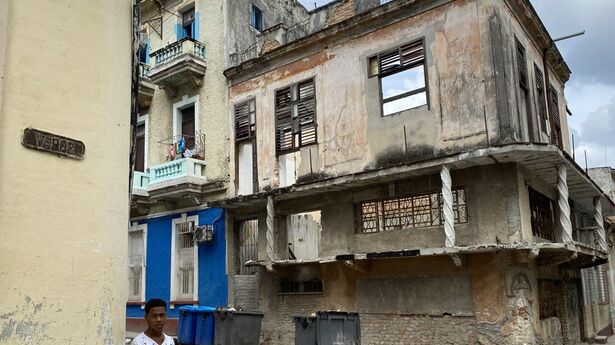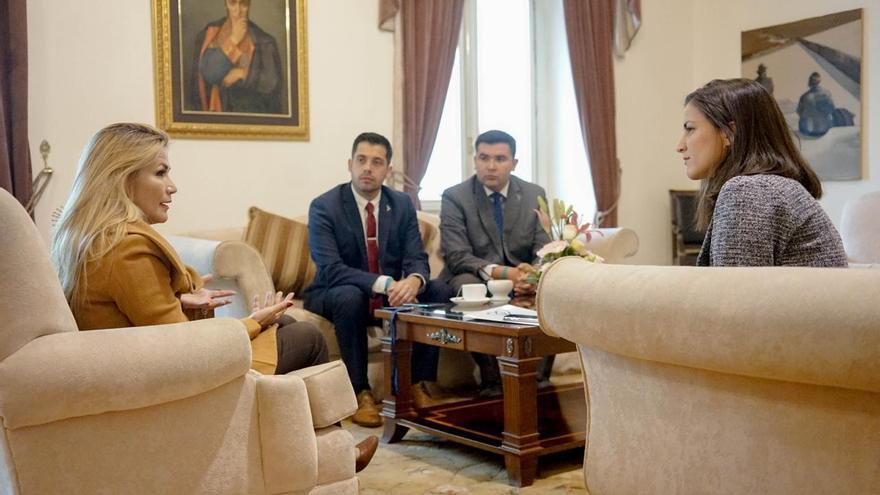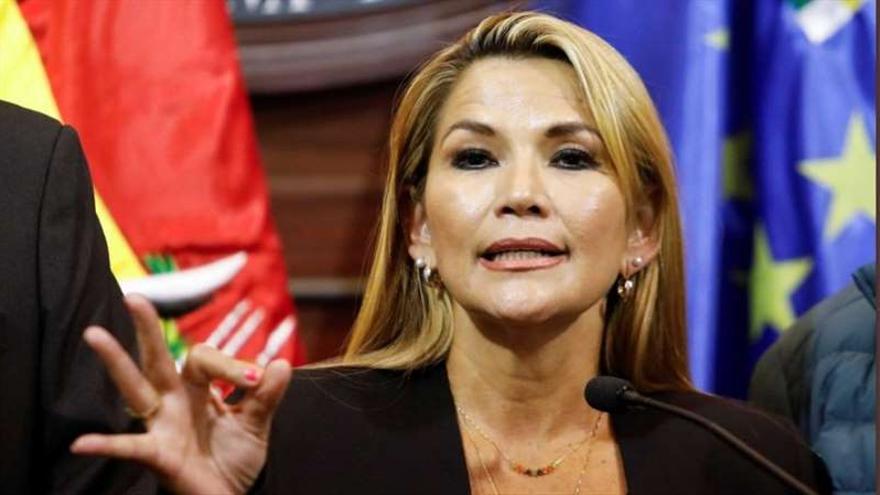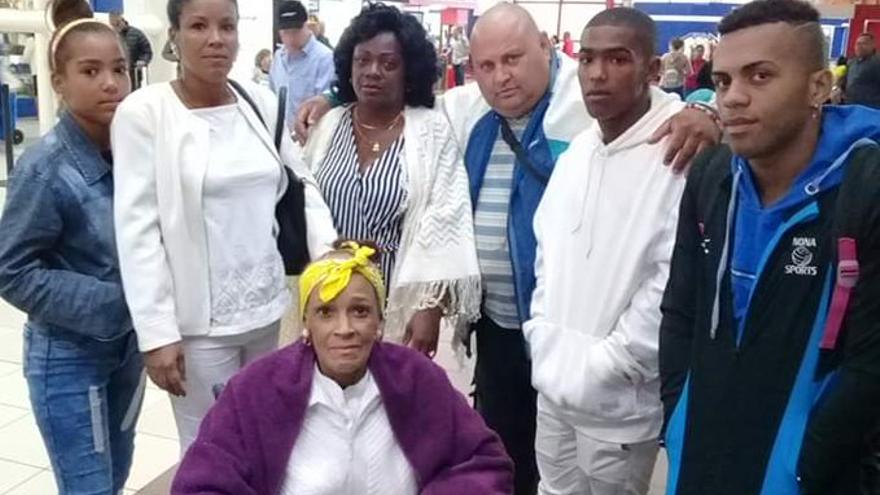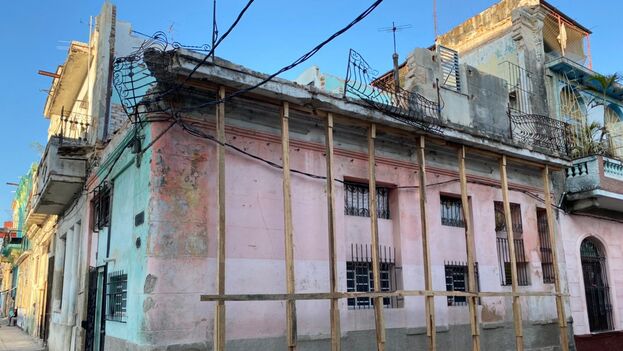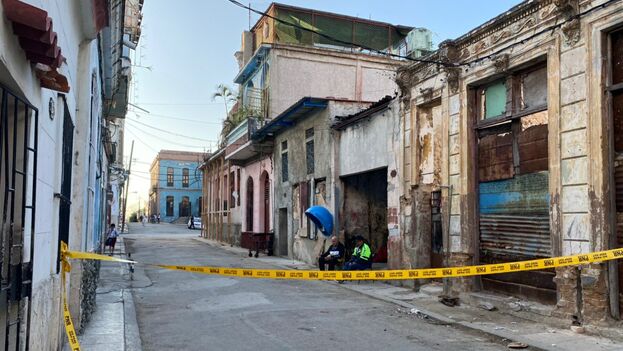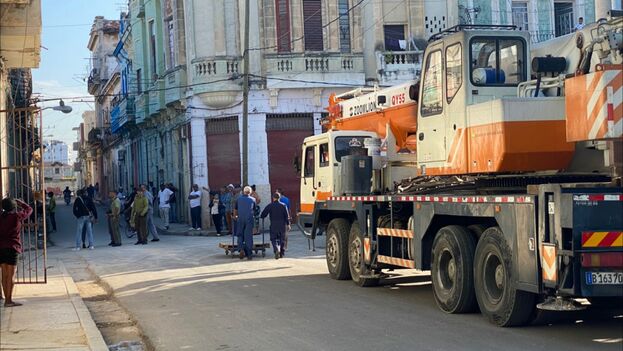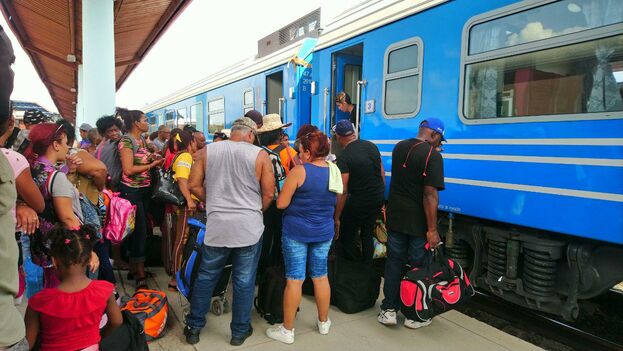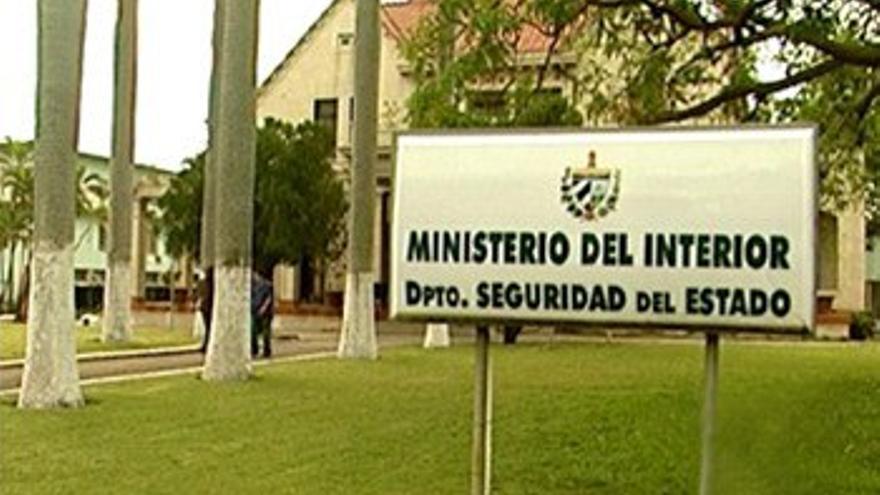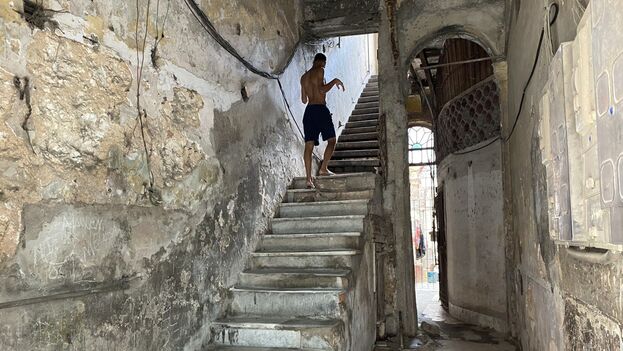
![]() 14ymedio, Luz Escobar, Havana, 3 February 2020 — The “route” of the deterioration starts at any corner in Havana. If a map of the city marked with red dots the cornices about to fall, the broken balconies, the cracked columns, the map would look like it had the measles. An intense rash would cover Centro Habana, el Cerro and wide areas of La Habana Vieja and municipalities in the southeast.
14ymedio, Luz Escobar, Havana, 3 February 2020 — The “route” of the deterioration starts at any corner in Havana. If a map of the city marked with red dots the cornices about to fall, the broken balconies, the cracked columns, the map would look like it had the measles. An intense rash would cover Centro Habana, el Cerro and wide areas of La Habana Vieja and municipalities in the southeast.
Residents of the Cuban capital have been living among the ruins for decades, but the death of three girls on January 27 buried under a fallen balcony in the neighborhood of Jesús María has once again focused on the situation.
A project seeks to involve the residents themselves in pointing out a situation that is worsening over time and denouncing it through social networks, under the hashtag #PeligroDerrumbeCuba [DangerCollapseCuba]. continue reading
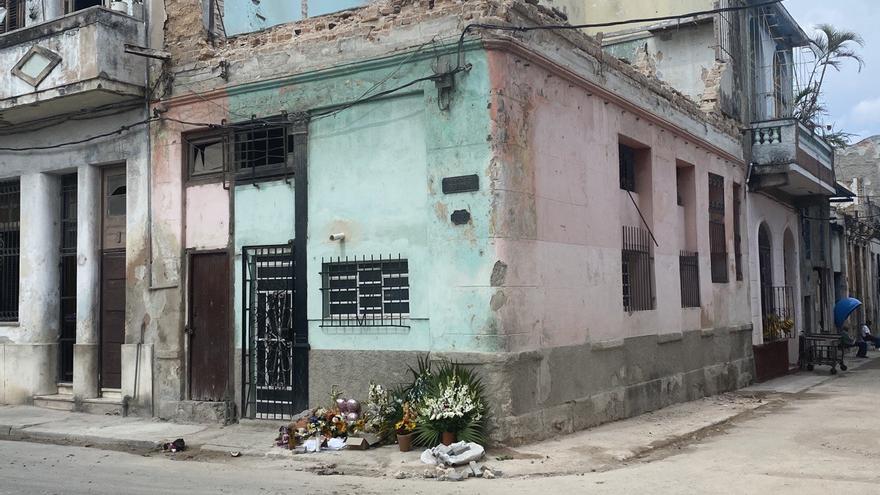
Launched on Twitter by Norges Rodríguez, coordinator and co-founder of the YucaByte project, the hashtag has a certain air of a desperate scream. For Havanans who must travel the streets with extreme care to avoid the gaps in the sidewalks and keep track of the dangers that may come from the heights, new technologies are another route that adds to the traditional verbal or bureaucratic demands.
At the end of 2018, Vivian Rodríguez Salazar (General Director of Housing) reported that 39% of the buildings were in substandard conditions. “There is a deficit of 929,695 homes; about 527,000 of them have to be built and 402,000 rehabilitated.”
With the arrival of the web browsing service to mobile phones, in December 2018, there have been several citizen initiatives that have taken over hashtags and signature collections, but #PeligroDerrumbeCuba is perhaps the one that can involve a the greatest number of people throughout the Island and especially in the most populated cities.
Ernesto, a resident of Industria Street in Havana is one of them. “Here at the corner there is a building that could collapse any of these days. Those from the Government say that there aren’t any cranes but it hurts to see how for the hotel they are building there behind Obispo Street if there is a crane available there 24-hours a day,” regrets the young man, who has chosen to load his complaint to Facebook.
In a nearby tenement, the neighbors climb the battered staircase built at the beginning of the last century and propped up in several areas.
“When I was a child, it was already like this and I thought that my daughters were not going to have to live with the terror that the building would collapse while they were sleeping, but I already have grandchildren and everything is the same and worse,” laments Clarisa, a resident of a damaged tenement on Zanja street near Infanta. The woman has taken photos of the interior of the building so that her teenage grandson can help her upload them to the internet.
“Here we have done everything, we have made demands of the delegate of the Popular Power, written letters to the State Council and even hired a brigade with our own money to help us with the most serious things, but this building is a ruin and it needs to be demolished and something else built,” the woman tells 14ymedio.
But neither relocation nor demolition arrive. At the entrance of the building two small children play outside under the fragility of the upper floor with dangerous cracks that run through the entire facade. “A few days ago part of the plaster fell from above and luckily at that time no one was passing but this is a time bomb,” laments another neighbor.
Along Zanja Street, many of the passers-by prefer to walk in the street despite the traffic. “No, I don’t walk along the sidewalk even if they force me, because at least I can see the cars coming, but if a piece of the wall falls from there, I have no way to react in time,” says a woman with two children who is working near Lealtad Street. “I have taught my children that they can’t stop looking up.”
While talking, she passes two tourists who are taking photos of building with art nouveau architecture with floral ornaments and some of its steel exposed by the deterioration. Visitors approach, look for their best angles and raise their cameras to take one of the many thousands, millions of images, of a city in ruins.
“They should warn tourists to be careful about collapses because they walk very calmly through these streets, but those of us who live here take precautions,” says a pedicab driver who expects new clients in the vicinity of Chinatown. “It seems like fun to them, but it’s one thing to pass by and another to live in one of those houses when you don’t know when it’s going to fall.”
The young man, from Ciego de Ávila, knows about the #PeligroDerrumbeCuba initiative through social networks. “As soon as I manage to buy a data package I will upload some photos that I have, because I spend the day traveling around the city and I know where the worst places are, although I also know where there is not even one collapse,” he says wryly.
The deterioration does not affect all neighborhoods equally. To the west, the areas with villas, mansions and gardens contrast with the overcrowding and deterioration of Centro Habana, Cerro, Luyanó, San Miguel del Padrón or Guanabacoa. When you live between the wide roads of Miramar or in the exclusivity of Atabey, the cracks in the walls and the busted septic tanks seem somewhat distant.
“That is the line of the Almendares [River]. It is not the same to live on this side here, where a balcony falls on your head or you fall into a hole and break a leg, as it is to reside on the other side,” details the pedicab driver. Beyond the river, where the wealthy classes live, the mapping of the deterioration mapping shows almost no red dots.
In the place where three days ago three girls died, buried under the huge stones of a collapsed balcony, the residents keep talking about that tragedy. All those who lifted those small bodies from among the stones could not sleep that first night, nor the second.
“I had to give my husband a pill that night, he couldn’t sleep,” said a young woman this Friday at the base of the wall where there are still gifts that many neighbors have left where that tragedy happened. “This has been very hard, it is necessary that nobody forgets what happened this January 27th in the neighborhood of Jesus Maria.”
Havana is Collapsing – A Photo Essay: Part 1, Part 2, Part 3, Part 4
__________________
COLLABORATE WITH OUR WORK: The 14ymedio team is committed to practicing serious journalism that reflects Cuba’s reality in all its depth. Thank you for joining us on this long journey. We invite you to continue supporting us by becoming a member of 14ymedio now. Together we can continue transforming journalism in Cuba.

